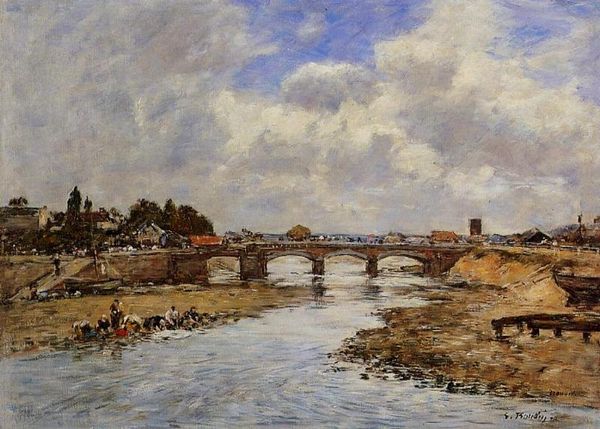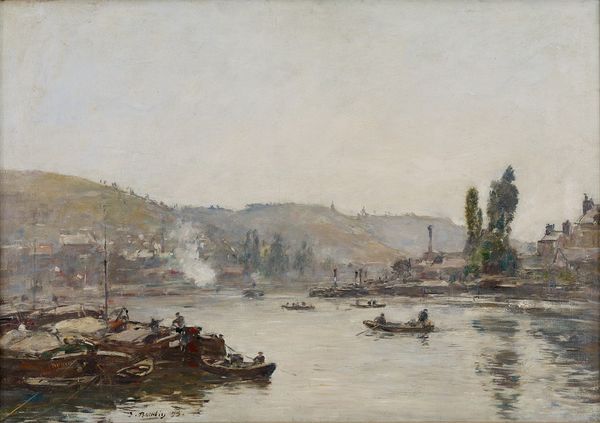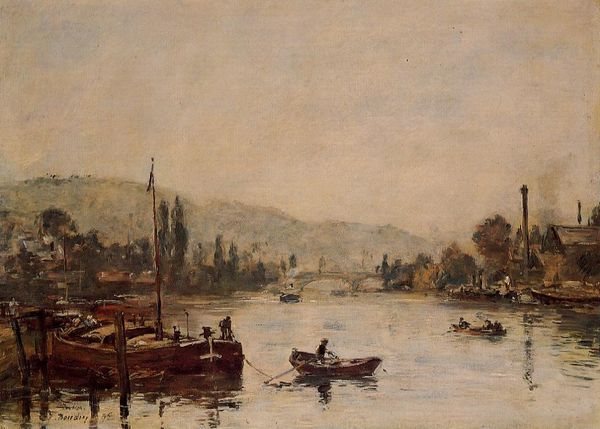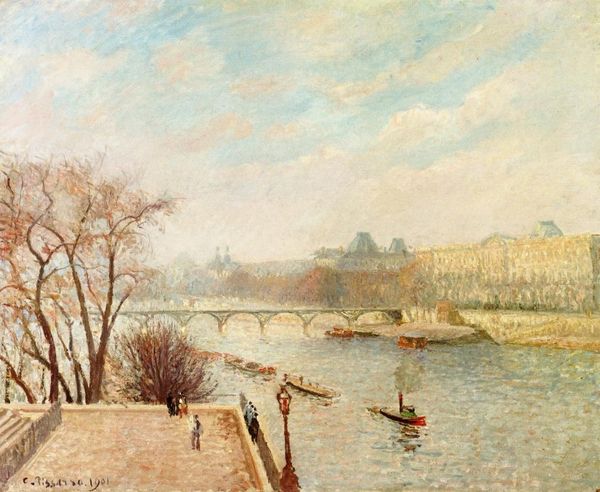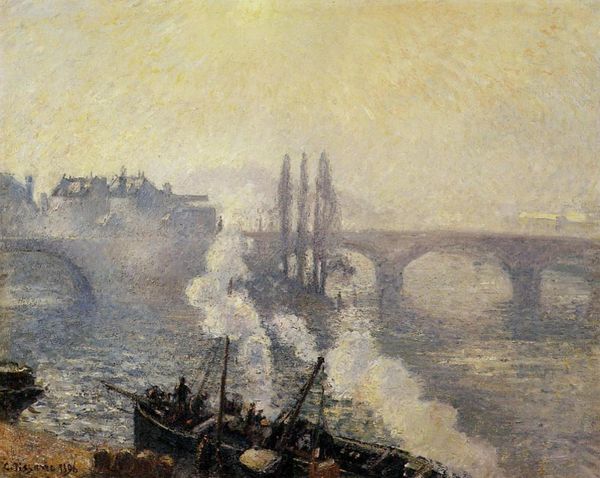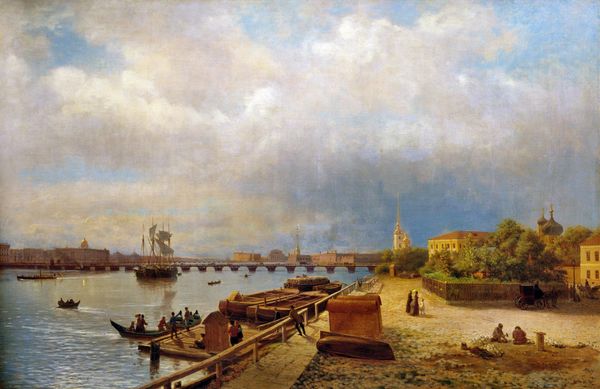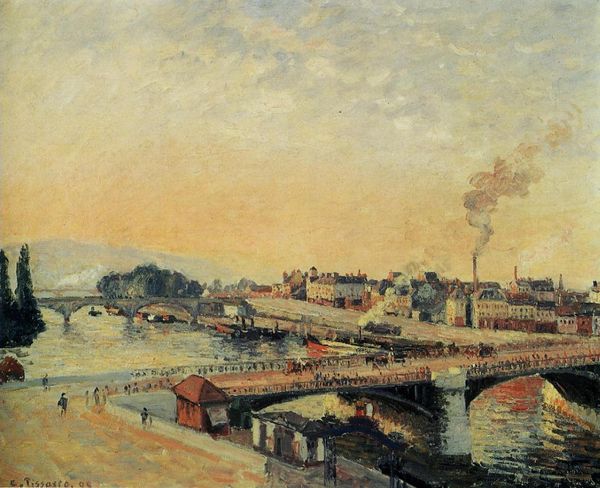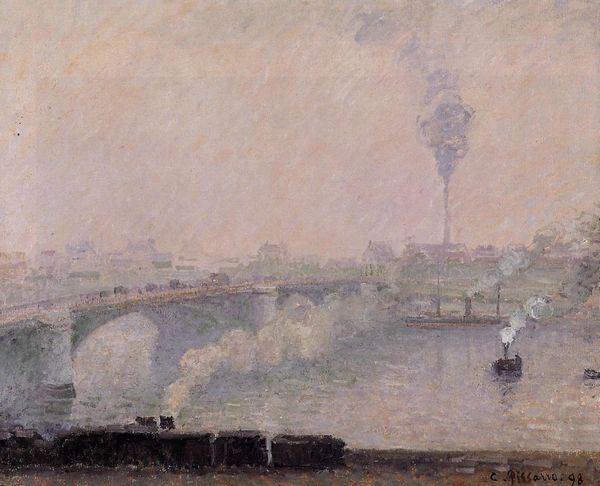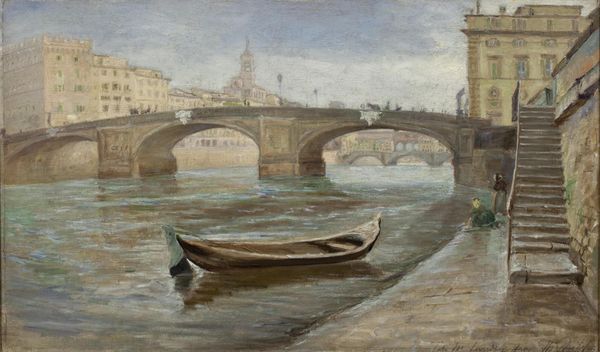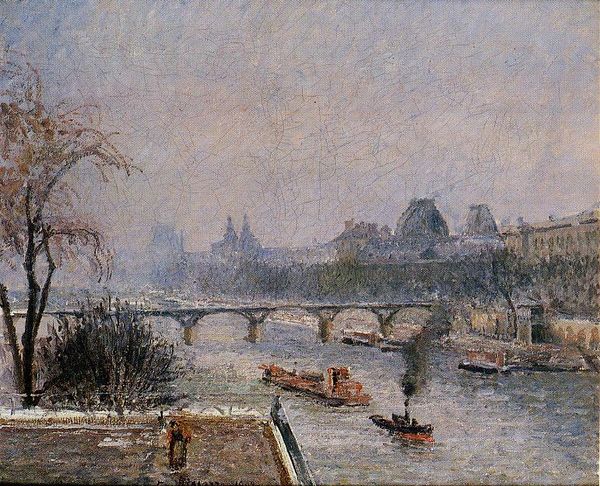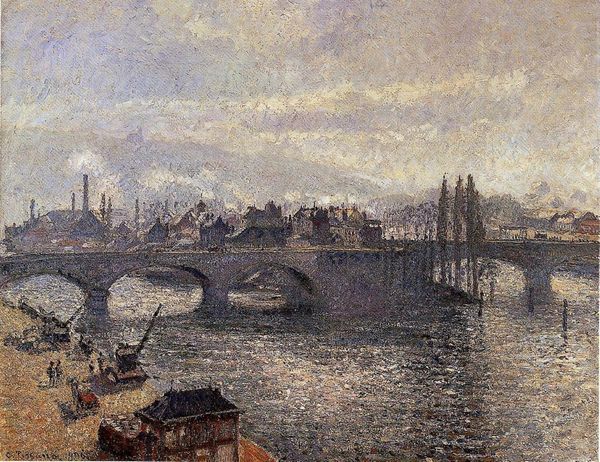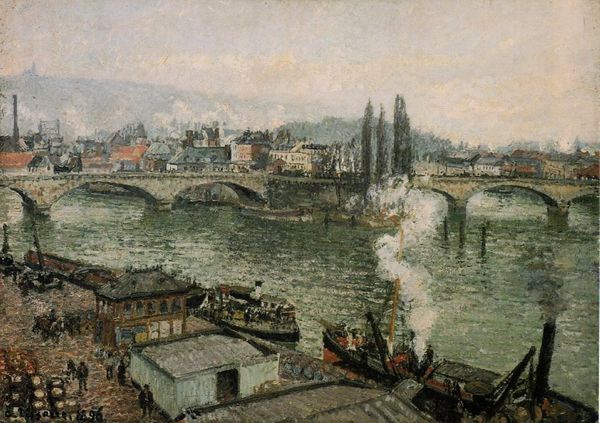
Copyright: Public domain
Curator: Before us hangs Eugène Boudin’s “Rouen, the Pont Corneille, Fog Effect,” painted in 1896. Boudin, often considered a precursor to Impressionism, masterfully captures the transient atmosphere of a foggy day. Editor: My immediate reaction is a sense of quietude. The muted palette and blurred forms create a calming effect, like a world briefly hushed by the mist. The atmospheric perspective is very effective at establishing spatial depth within the scene. Curator: Indeed. Note how Boudin uses primarily neutral tones—grays, creams, and browns—applied with loose brushstrokes. This technique dissolves the clear outlines of objects, blending the bridge, boats, and buildings into the hazy atmosphere. Boudin captures the subtleties of light filtering through fog in the industrial cityscape of Rouen. Editor: It is remarkable how the composition reinforces this feeling. The horizontal lines of the bridge and river create a sense of stillness, broken only by the small boats gliding through the water. What were the popular aesthetic values circulating during this time that made a scene like this worthy of attention? Curator: During the late 19th century, Impressionism embraced the subjective perception of reality. The focus shifted from precise representation to capturing fleeting moments and sensations, as we observe here with the atmospheric focus in this painting. The selection of this seemingly mundane scene aligns with Impressionist values, elevating everyday life. Editor: The materiality contributes to this feeling. Look at the paint texture—the thick application in some areas contrasts with the thin washes that create the foggy effect. Boudin allows the materials to speak as clearly as the composition. It also invokes questions related to urbanization, industry and the natural world's ability to persist within. Curator: Absolutely. And consider the political context of France at this time— a period of rapid industrialization. Boudin, while known for seascapes, here turns his attention to the effects of modern life, hinting at both its beauty and its challenges with subtlety. Editor: So, rather than idealizing a pristine landscape, Boudin captures the gritty beauty of an urban environment softened by fog. It's a reflection on how even the most mundane scene, like an everyday bridge shrouded in fog, can be transformed into a contemplative, emotionally rich experience. Curator: A truly compelling intersection of form, technique, and cultural observation; his work invites viewers to reconsider the aesthetics found within their daily encounters with the natural world.
Comments
No comments
Be the first to comment and join the conversation on the ultimate creative platform.
